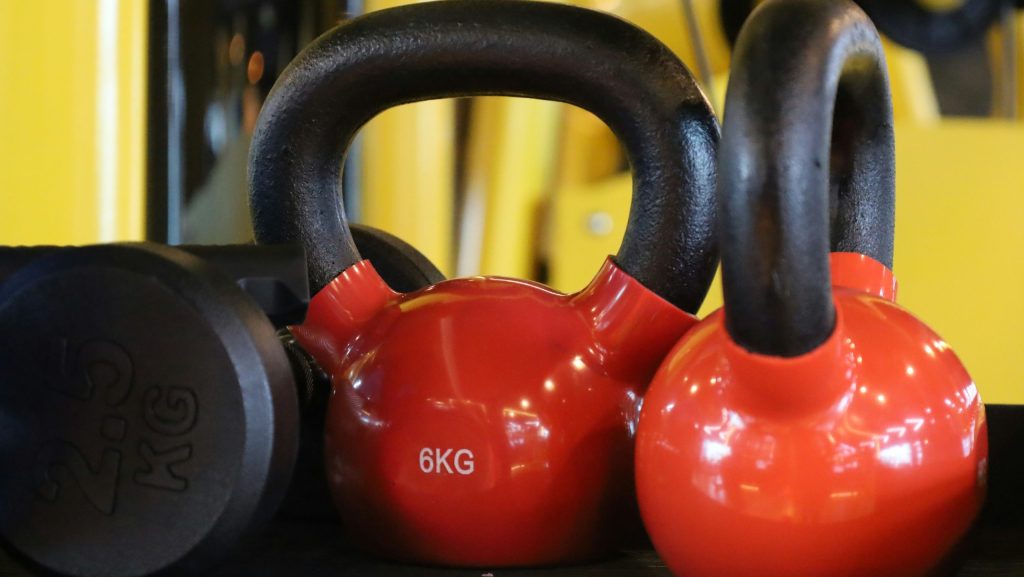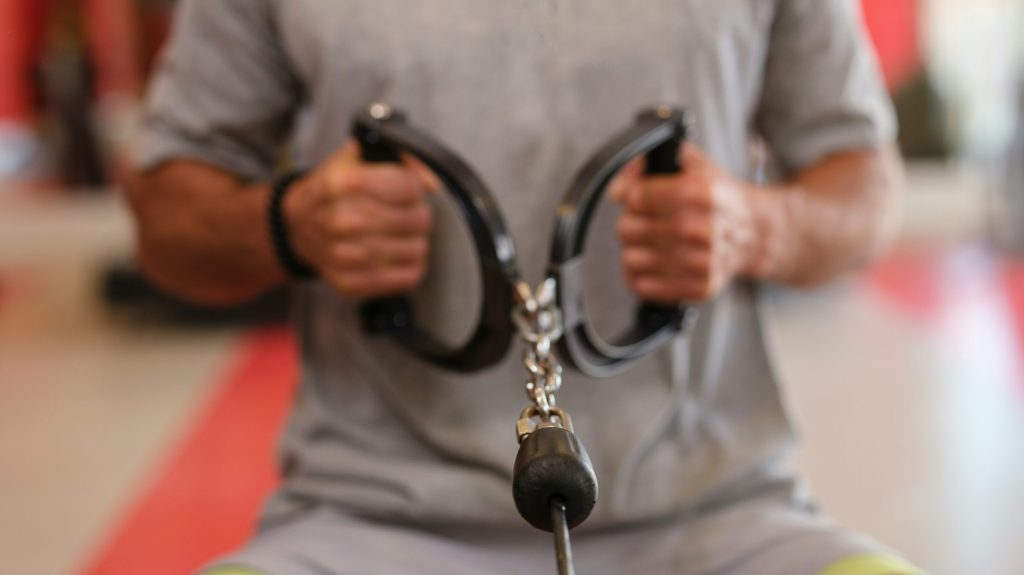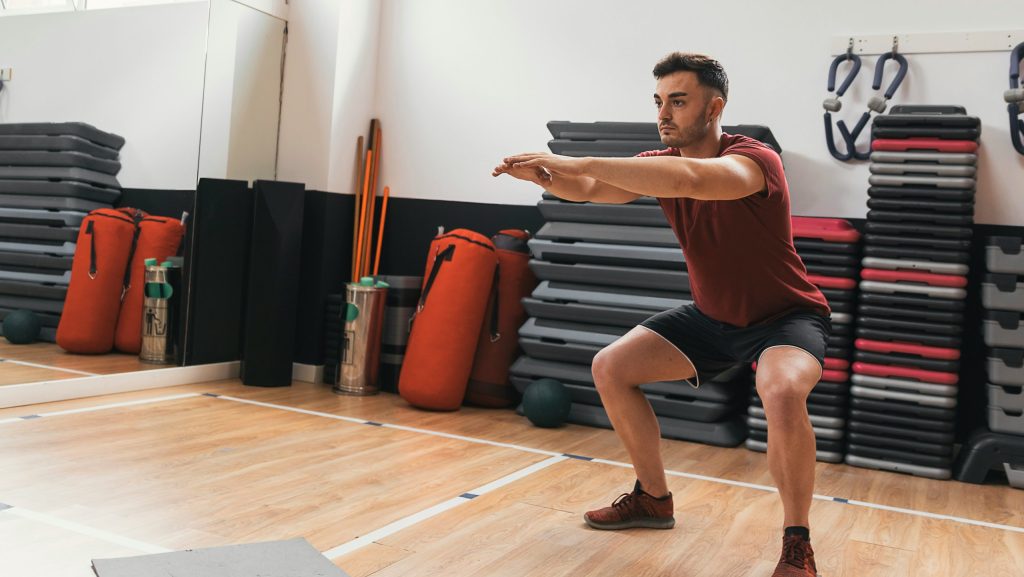Table of Contents
As the global population ages, more seniors are actively seeking ways to maintain physical fitness. Strength training is a crucial element of an active lifestyle for older adults, offering significant benefits such as increased muscle mass, enhanced joint mobility, and improved overall health. This introduction explains the value of integrating strength training into daily routines tailored for seniors, emphasizing safe and effective practices.
Strength training is particularly effective in increasing bone density and metabolic rate, which are essential for managing age-related conditions such as arthritis, heart disease, and diabetes. With appropriate modifications and guidance, strength training is both accessible and beneficial for seniors, contrary to common misconceptions that it may be hazardous.
“Did you know that incorporating strength training can help seniors reduce the risk of falls by improving balance and muscle strength?”
This article will cover several key topics essential for seniors interested in beginning or improving their strength training regimen:
- Introduction to Strength Training for Seniors: The benefits and foundational aspects tailored to older adults.
- Essential Strength Exercises for Older Adults: Specific safe and effective exercises.
- Creating a Senior-Friendly Gym Routine: How to design a routine that considers the physical limitations often encountered by seniors.
- Safety Precautions and Injury Prevention: Important tips for conducting workouts safely to minimize injury risks.
- Nutrition and Recovery for Senior Athletes: Discussing the nutritional needs and recovery processes crucial for senior participants.
Beginning strength training can significantly enhance the quality of life for seniors, making it possible to maintain independence and physical health longer. By incorporating exercises suited for older individuals, seniors can improve their mobility and strength, and effectively manage the physical challenges of aging.
Through carefully chosen exercises and routines, seniors can achieve substantial health benefits. This guide provides detailed information on how to safely include strength training in their lifestyles, emphasizing the importance of adapting exercises to meet individual health and fitness levels. Proper nutrition and adequate recovery are also crucial in supporting the physical demands of strength training in older adults.
Stay informed on how to incorporate strength training safely and effectively into your routine to benefit from an active and healthy lifestyle. This guide will equip you with the necessary information to make informed decisions about your health and fitness as you age. Whether you are starting out or seeking to enhance an existing routine, the information here will assist in maintaining your health through strength training.

Introduction to Strength Training for Seniors
Strength training is essential for seniors aiming to preserve health and physical independence. With aging, muscle mass and strength typically decrease, a process known as sarcopenia. Regular strength training combats these effects, enabling older adults to sustain their independence and more effectively manage chronic health conditions.
Benefits of Strength Training in Senior Years
Strength training offers multiple health advantages for seniors. It preserves and even increases muscle mass, which typically declines with age. Stronger muscles improve mobility and balance, critical factors in reducing the incidence of falls among the elderly. Furthermore, strength training boosts metabolic function, aiding in weight management and blood sugar control, benefits that are particularly important for those with type 2 diabetes.
This form of exercise also promotes mental health. Engaging in strength training stimulates the release of endorphins, which are chemicals in the brain that act as natural mood enhancers. This is vital for combating depression and anxiety, conditions that are common among seniors. Participating in group exercises or visiting gyms can also provide valuable social interaction, further enhancing mental health through community support and engagement.
Overcoming Common Myths About Seniors and Exercise
Several myths deter seniors from participating in strength training, such as the belief that it is unsafe or could worsen arthritis and joint pain. However, when conducted under professional supervision and with appropriate techniques, strength training is safe and can actually enhance joint function by strengthening the muscles around them.
Contrary to the belief that it is too late to start strength training later in life, research indicates that individuals in their 70s and 80s can still build muscle mass and increase strength with regular physical activity. The benefits are substantial and can be realized no matter when a person begins their training regimen.
How to Get Started with Strength Training
For seniors initiating strength training, it is imperative to take several precautionary steps to ensure safety and efficacy. Initially, obtaining medical clearance from a healthcare provider is essential, particularly for those with existing health conditions. Following clearance, consulting with a fitness professional to devise a personalized strength training plan is recommended.
Seniors new to strength training should start with low-intensity exercises, gradually increasing intensity as their strength and comfort level grow. Utilizing machines that offer adjustable resistance and provide stable support is ideal for beginners. Exercises focusing on core strength, balance, and flexibility should also be integrated, forming a comprehensive foundation for more advanced exercises in the future.

Essential Strength Exercises for Older Adults
Strength training plays a critical role in maintaining health and physical independence in seniors. This section provides detailed insights into specific strength exercises tailored for older adults, including low-impact workouts, chair exercises, and routines aimed at enhancing flexibility and balance.
Low-impact Strength-Building Workouts
Low-impact workouts are essential for seniors to minimize injury risks while effectively strengthening muscles and bones. Exercises should focus on movements that do not excessively stress the joints. Wall push-ups and seated leg presses, for instance, enable muscle engagement without the strain associated with more intense exercises.
Incorporating resistance bands or light dumbbells can enhance these exercises by adding resistance, thus improving their effectiveness while maintaining safety. The goal of resistance training for the elderly is to maintain muscle tone and functional strength critical for daily activities, rather than lifting heavy weights. Additional exercises like squats to a chair and standing calf raises offer excellent ways to improve lower body strength and stability, which are vital for mobility and balance.
Chair Exercises and Resistance Band Routines
Chair exercises provide a stable way for seniors to perform strength training safely. These exercises can be done while seated or using a chair for support. Key exercises include:
- Seated bicep curls and overhead arm raises with resistance bands, which strengthen the upper body.
- Seated leg extensions and ankle rotations, which improve lower body strength and circulation.
Resistance bands are particularly beneficial for seniors due to their versatility and adjustable intensity. They can be used for a variety of exercises, including chest pulls, seated rows, and standing hip extensions, all of which help build muscle strength across different body parts. These routines not only increase muscle mass but also enhance joint flexibility and mobility, essential for maintaining independence.
“Resistance training can increase senior citizens’ muscle strength by up to 30% within just five weeks of consistent training.”
Importance of Maintaining Flexibility and Balance
Maintaining flexibility and balance is crucial for preventing falls and improving overall body functionality in seniors. Flexibility training should include exercises that enhance joint mobility and reduce stiffness. Adapted yoga or Tai Chi can be particularly beneficial for seniors, helping to maintain flexibility, improve balance, and reduce stress.
Balance exercises are also critical and can be easily integrated into daily routines. Simple activities like standing on one leg or walking heel to toe can significantly improve balance. These exercises can be practiced throughout the day, enhancing stability and coordination, essential for preventing falls and maintaining mobility.
Incorporating specific strength exercises into the daily routines of seniors can significantly enhance their physical capabilities and overall well-being. The exercises outlined here are designed to be safe, effective, and accessible, ensuring that older adults can maintain active and independent lives. Detailed guidance on each exercise and safe incorporation into fitness regimens is available in the subsequent sections, providing seniors with the tools they need to stay healthy and strong.

Creating a Senior-Friendly Gym Routine
Developing a gym routine tailored to the needs of seniors is critical for maintaining health and enhancing life quality. This subtopic provides insights into crafting a senior-friendly gym routine, focusing on proper workout intensities, integrating rest days, and adapting plans for changing physical abilities.
Tailoring Workout Intensity to Individual Capability
An effective gym routine for seniors must begin with a thorough assessment of each individual’s fitness level and medical history. Health care providers and fitness professionals should evaluate seniors to customize routines that match their physical capabilities.
The intensity of workouts should be carefully managed to ensure safety and effectiveness. Starting with lighter weights and higher repetitions is advisable to gradually enhance strength without overwhelming the body. As seniors gain strength and confidence, the intensity can be safely increased. Equipment like resistance bands and stationary bicycles offer adjustable resistance levels, making them ideal for seniors. They allow for a gradual increase in exercise intensity, supporting ongoing physical improvements.
“Incorporating rest days reduces injury risks in seniors by over 30%, promoting longer and healthier engagement in physical activities.”
Incorporating Rest Days and Light Activity
It is essential for seniors to balance active days with adequate rest to prevent overtraining and injuries. A well-planned workout schedule should strategically include rest days to allow the body time to recover and repair. On these days, engaging in light activities such as walking, stretching, or gentle yoga can keep seniors active while aiding muscle recovery and circulation.
Regular, planned rest days help maintain a routine that balances exertion with recovery, crucial for long-term physical activity and injury prevention. These light activities are not only beneficial for maintaining general health but also play a critical role in ensuring continuous mobility and reducing the risk of stiffness and joint pain associated with inactivity.
Tips for Regular Monitoring and Progression Adjustments
Continual monitoring and adjustments are vital to maintain a relevant and safe fitness regimen for seniors. Regular evaluations should be conducted to assess how seniors respond to exercises and to determine when it is appropriate to adjust workout intensities. Metrics such as endurance, strength levels, flexibility, and exercise response can guide these adjustments.
As seniors age, their exercise routines may need modifications to accommodate changes in physical health and capabilities. Frequent consultations with health professionals and fitness trainers ensure that routines remain optimal for health and safety. Adjustments may include modifying exercise types, changing workout frequencies, or altering intensities.
Simple Table: Key Elements of a Senior-Friendly Gym Routine
| Stage | Activity Level | Equipment Used |
|---|---|---|
| Initial | Light weights, high repetitions | Resistance bands |
| Intermediate | Moderate weights | Stationary bicycles |
| Advanced | Higher weights, varied reps | Free weights |
Establishing a well-structured gym routine is crucial for seniors to effectively manage their physical health and improve their quality of life. By carefully tailoring workout intensities, incorporating rest days, and regularly adjusting fitness plans, seniors can enjoy a safe and rewarding fitness journey. Detailed strategies to implement and adapt these practices are available in the following sections, providing seniors with the guidance needed to maintain a healthy and active lifestyle.

Safety Precautions and Injury Prevention
Ensuring safety during workouts is critical for seniors to maintain health and prevent injuries. This subtopic outlines essential safety precautions and injury prevention techniques, including obtaining medical clearance, using gym equipment correctly, and recognizing and responding to pain during exercise.
Importance of Medical Clearance Before Starting
Obtaining medical clearance from a healthcare provider is mandatory for seniors before starting any new exercise program. This clearance is crucial to identify any health risks that could be exacerbated by physical activity and to ensure that exercise plans are safe and suitable for their specific health conditions. Healthcare professionals assess aspects such as cardiovascular health, joint stability, and overall fitness to tailor exercise programs that minimize risks and optimize benefits.
This medical evaluation includes a detailed review of health history, current medication, and any physical limitations that might affect exercise capabilities. For seniors with chronic conditions like heart disease, diabetes, or arthritis, obtaining clearance is essential for safe participation in physical activities.
How to Use Gym Equipment Safely
Proper use of gym equipment is essential to prevent injuries among seniors. Initial and ongoing training on how to use equipment correctly is crucial for safe exercise practices. Fitness centers should ensure that seniors are familiar with the adjustments and use of each piece of equipment they intend to use.
“According to recent studies, proper use of gym equipment can reduce the risk of exercise-related injuries in seniors by up to 50%.”
Equipment adjustments such as seat height, handle positions, and appropriate weight settings are critical to accommodate seniors’ physical needs. Machines that enhance stability and minimize joint strain, like recumbent bikes or elliptical machines, are especially beneficial. Safety features on gym equipment, including non-slip surfaces, adequate spacing for safe movement, and clearly marked emergency stops, are also vital to prevent falls and other related injuries.
Recognizing and Addressing Pain During Workouts
It is crucial for seniors to differentiate between normal exercise-related discomfort and potentially harmful pain that indicates injury. Educating seniors on the signs of concerning pain is key to preventing serious injuries. Any sharp, acute pain that persists beyond normal muscle fatigue should be addressed immediately. Stopping exercise and applying first aid measures, such as ice for swelling, can prevent further damage.
If pain does not subside with rest, it is important to consult a healthcare provider without delay. Ongoing or unusual pain should prompt a review of the exercise program by a fitness professional to make necessary adjustments.
- Recognizing and Addressing Pain Symptoms:
- Sharp or acute pain: Cease exercising immediately; apply ice if swelling is present.
- Pain that persists with rest: Seek medical advice promptly.
- Continuous or unusual discomfort: Adjust exercise regimen after consulting a fitness professional.
Following safety guidelines and implementing injury prevention strategies are critical for seniors participating in any exercise program. By understanding how to use gym equipment correctly, obtaining necessary medical clearances, and responding effectively to signs of pain, seniors can safely enjoy the benefits of physical activity. Further details on maintaining safety and effectively managing discomfort during exercise are available in the subsequent sections, helping seniors to engage in physical activities safely and effectively.

Nutrition and Recovery for Senior Athletes
Proper nutrition and effective recovery strategies are essential for senior athletes to maintain performance and overall health. This section discusses the critical aspects of nutrition and recovery, emphasizing essential nutrients, the significance of hydration, and the role of sleep and rest in the recovery process.
Key Nutrients for Muscle Repair and Strength
For senior athletes, maintaining an adequate intake of nutrients is crucial for muscle repair and strength maintenance. Proteins are particularly important as they facilitate the repair of tissue damage incurred during physical activities. Senior athletes should ensure they consume sufficient lean proteins from sources such as chicken, fish, tofu, and legumes, which support muscle mass maintenance and recovery.
Calcium and vitamin D are necessary for bone health, helping to prevent fractures, while iron is important for maintaining energy levels and preventing anemia. Antioxidants such as vitamins C and E help reduce oxidative stress and muscle fatigue by neutralizing free radicals produced during exercise.
“Adequate hydration can increase performance levels by up to 20% in senior athletes, as it aids in optimal physiological function and recovery.”
Hydration and Its Role in Recovery
Hydration is vital for recovery and overall health in senior athletes. Water is crucial for all metabolic functions and nutrient transport within the body, and maintaining hydration is essential for optimal health and recovery. Seniors have an increased risk of dehydration as the body’s thirst response diminishes with age, making it essential to consume fluids regularly, especially before, during, and after exercise.
Proper hydration supports joint lubrication, aids temperature regulation, and facilitates digestion, all of which contribute to recovery and athletic performance. Electrolyte-enhanced drinks can be beneficial post-exercise to replenish salts lost through sweat and help prevent muscle cramps and fatigue.
Importance of Sleep and Rest Days in the Recovery Process
Quality sleep is imperative for the recovery process as it helps repair muscles and replenishes energy stores. Adults over 65 should aim for 7-8 hours of sleep per night to support these functions. Establishing a regular sleep routine can improve sleep quality, which in turn aids in recovery and enhances performance.
Rest days play a critical role in any fitness regimen, especially for seniors. These days allow the body to recover from the exertion of exercise and help prevent injury. Engaging in light activities such as walking or gentle stretching on rest days can keep muscles active without overly stressing them, which helps in maintaining mobility and reducing the risk of injury.
- Key Nutrients Important for Seniors:
- Protein: Essential for muscle repair and growth; sources include chicken, fish, tofu, and legumes.
- Calcium and Vitamin D: Important for bone health; sources include dairy products and fortified cereals.
- Iron: Crucial for energy and preventing anemia; sources include red meat and leafy greens.
- Antioxidants: Help reduce oxidative stress; sources include berries, nuts, and vegetables.
For senior athletes, focusing on nutrition, hydration, and adequate rest is fundamental to maintaining health and enhancing athletic performance. By adhering to recommended dietary intake and ensuring regular hydration and rest, seniors can effectively support their body’s recovery needs and sustain an active lifestyle. The following sections will provide more detailed information on implementing these strategies effectively.

Conclusion: Senior Gym Strength Training Tips
This article has provided a detailed guide to establishing a comprehensive fitness plan for seniors, covering essential aspects from initiating strength training to optimizing nutrition and recovery strategies. Each section is designed to assist older adults in enhancing their health and longevity effectively and safely.
Review of Key Insights from Each Subtopic
Introduction to Strength Training for Seniors: We covered the benefits and necessary precautions for starting strength training, emphasizing its importance for improving muscle mass, bone density, and mobility. Recommendations on beginning with medically supervised, low-intensity exercises were also discussed.
Essential Strength Exercises for Older Adults: We identified specific exercises that are effective and safe for seniors, including low-impact and chair exercises. These routines help maintain flexibility, improve balance, and build strength in a safe manner.
Creating a Senior-Friendly Gym Routine: Strategies for tailoring gym routines to fit seniors’ unique needs were outlined, including adjusting workout intensities and incorporating adequate rest days to optimize health benefits and minimize risks.
Safety Precautions and Injury Prevention: This section provided guidelines for using gym equipment safely and methods for preventing injuries. It stressed the importance of recognizing signs of undue pain and making appropriate adjustments to exercise routines.
Nutrition and Recovery for Senior Athletes: The role of proper nutrition and recovery in maintaining the health and performance of senior athletes was explored. We highlighted the importance of proteins, vitamins, and adequate hydration, alongside the need for sufficient sleep and rest days.